The Pyramids of Giza rise from the golden sands of Egypt as eternal guardians of history. Just outside the bustling capital of Cairo, these monuments have stood for over 4,500 years, outlasting dynasties, empires, and the passage of time itself. To walk across the Giza Plateau is to step into the heart of one of humanity’s greatest civilizations, where the ambitions of pharaohs and the artistry of ancient builders continue to inspire awe.
History & Heritage
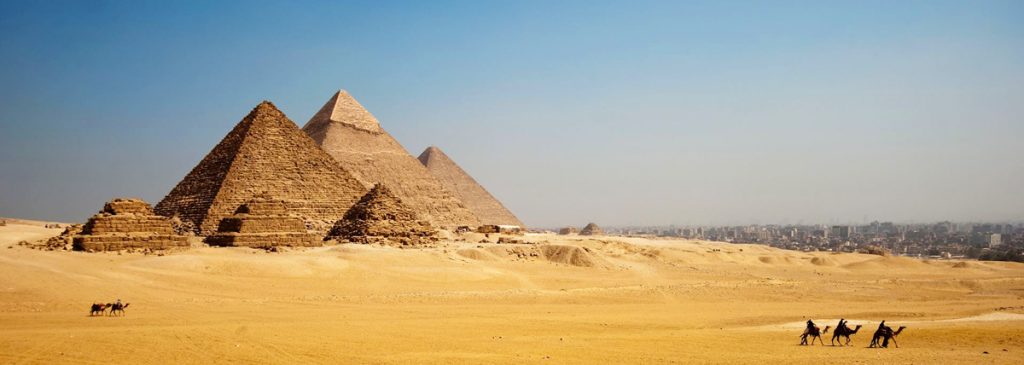
The pyramids were built during Egypt’s Old Kingdom as grand tombs to secure the pharaohs’ journey into the afterlife. Their sheer size and precision speak to an age when architecture and spirituality were inseparable. Each pyramid tells a story of ambition, power, and eternal faith carved into stone.
- The Great Pyramid of Khufu, one of the Seven Wonders of the Ancient World, is constructed from over two million limestone blocks.
- Khafre’s Pyramid, slightly smaller, still preserves a portion of its original smooth casing at the top.
- The Pyramid of Menkaure, while modest in scale, completes the royal trio with enduring elegance.
Landmarks & Architecture
Giza is far more than a single pyramid—it is a vast complex filled with iconic monuments and sacred structures. Together, they form a masterpiece of ancient design. Walking among these massive creations is to step into the blueprint of eternity itself.
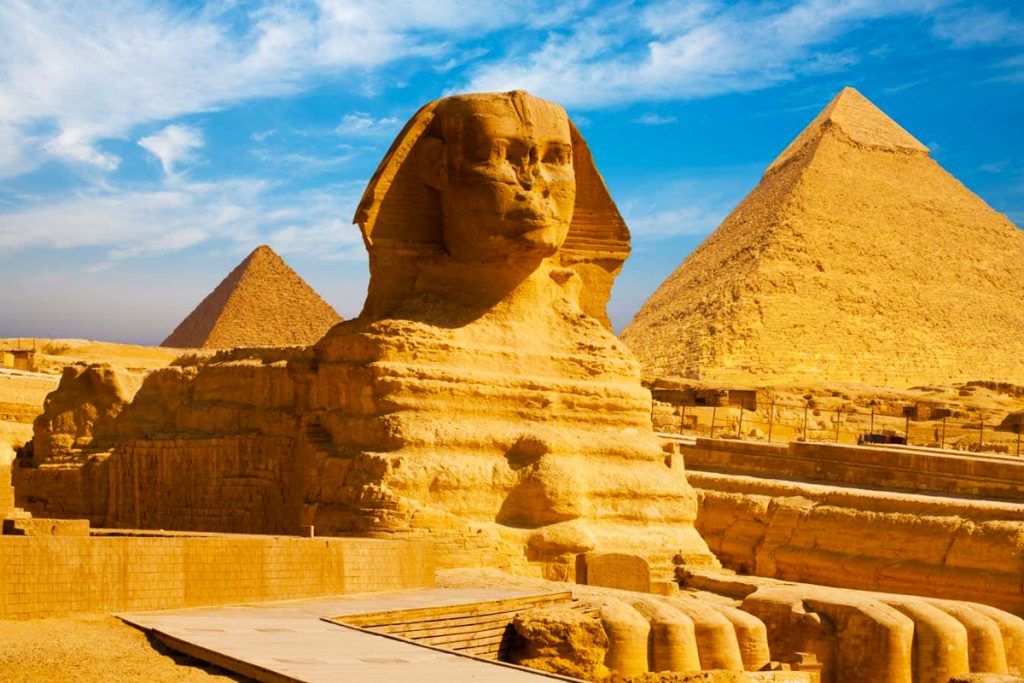
- The Great Sphinx: with its lion’s body and human face, stands as the plateau’s eternal guardian.
- Mortuary temples: causeways once connected the pyramids to the Nile, where rituals honored the gods.
- The Eastern Cemetery of the Giza Necropolis: lies just east of the Great Pyramid and contains the mastabas of high-ranking officials, priests, and members of Khufu’s family. These rectangular stone tombs are decorated with hieroglyphic inscriptions and relief carvings that capture scenes of daily activities—fishing, farming, feasting—that bring the ancient world vividly to life. It is a reminder that the pyramid complex was not only for kings but also for the courtiers and elites who served them, creating a broader community of remembrance around the pharaohs.
Museums & Culture
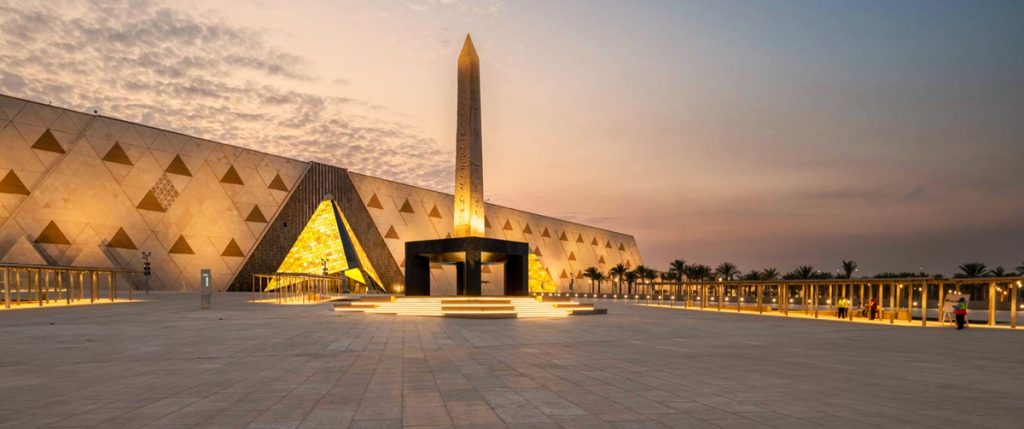
The museums near Giza add depth to what the stones alone cannot say. They hold treasures that illuminate the beliefs, rituals, and artistry of Egypt’s past. Exploring them gives visitors a deeper sense of how these monuments fit into the vast story of Egyptian civilization.
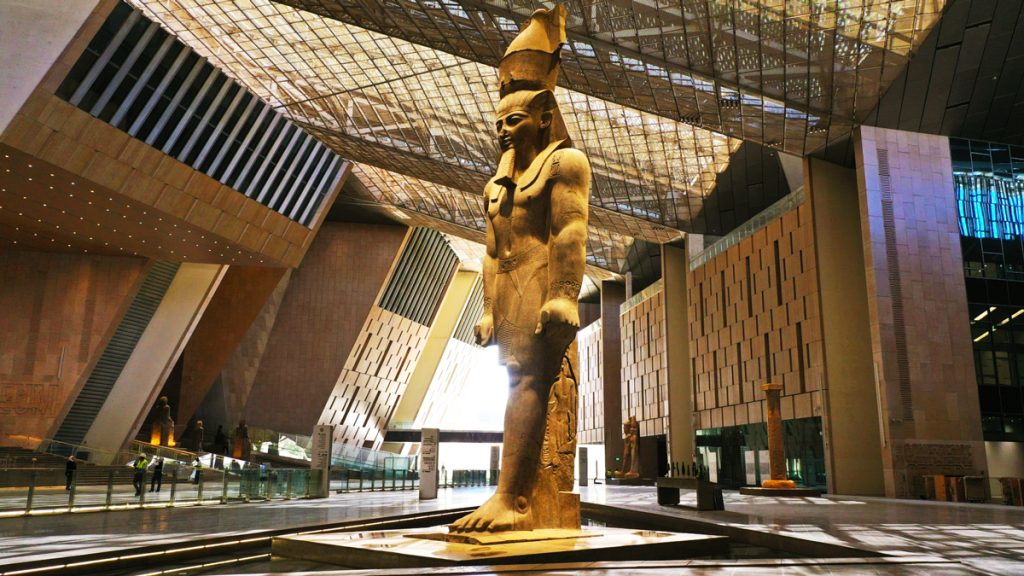
- The Grand Egyptian Museum (GEM): located just two kilometres from the Giza Plateau, GEM has begun welcoming visitors and is already considered one of the most ambitious cultural projects of the 21st century. Its striking architecture, inspired by the lines of the pyramids, frames sweeping views of Khufu’s monument in the distance. The museum’s vast atrium houses towering statues of Ramses II and other pharaonic giants, while galleries showcase tens of thousands of artifacts. For the first time, the complete collection of Tutankhamun’s treasures is being displayed together, including his iconic golden mask, chariots, and jewelry. With interactive exhibits, conservation labs, and rotating displays, the GEM is redefining how Egypt’s history is experienced in the modern age.
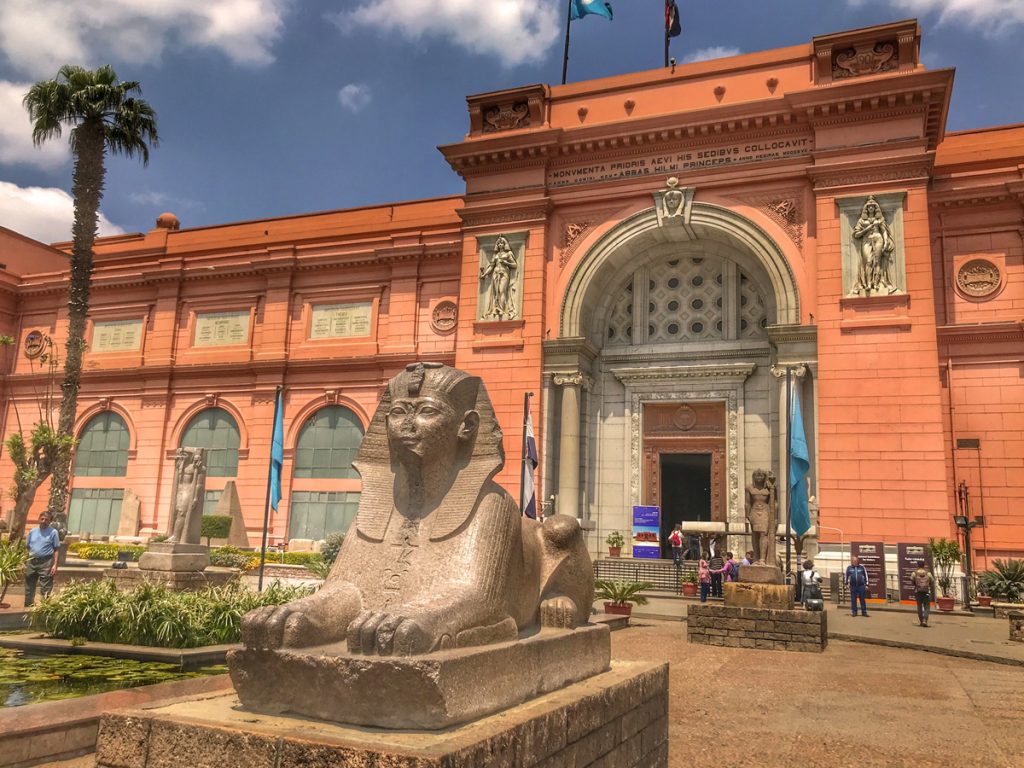
- The Egyptian Museum in Cairo: the museum remains a beloved institution with its historic halls filled with colossal statues, intricately decorated sarcophagi, and royal mummies. Though many treasures are being relocated to the GEM, this museum still offers an intimate, atmospheric look at Egypt’s past. Together, these museums ensure that Giza is not just about the monuments but also about the stories, objects, and lives that gave them meaning.
Spotlight: The Great Sphinx
No visit to Giza is complete without encountering the Great Sphinx, one of the most iconic monuments of the ancient world. Carved from a single ridge of limestone, this immense statue stretches 240 feet in length and rises 66 feet high, combining the strength of a lion with the wisdom of a king. Its gaze, fixed eastward toward the rising sun, has endured for millennia.
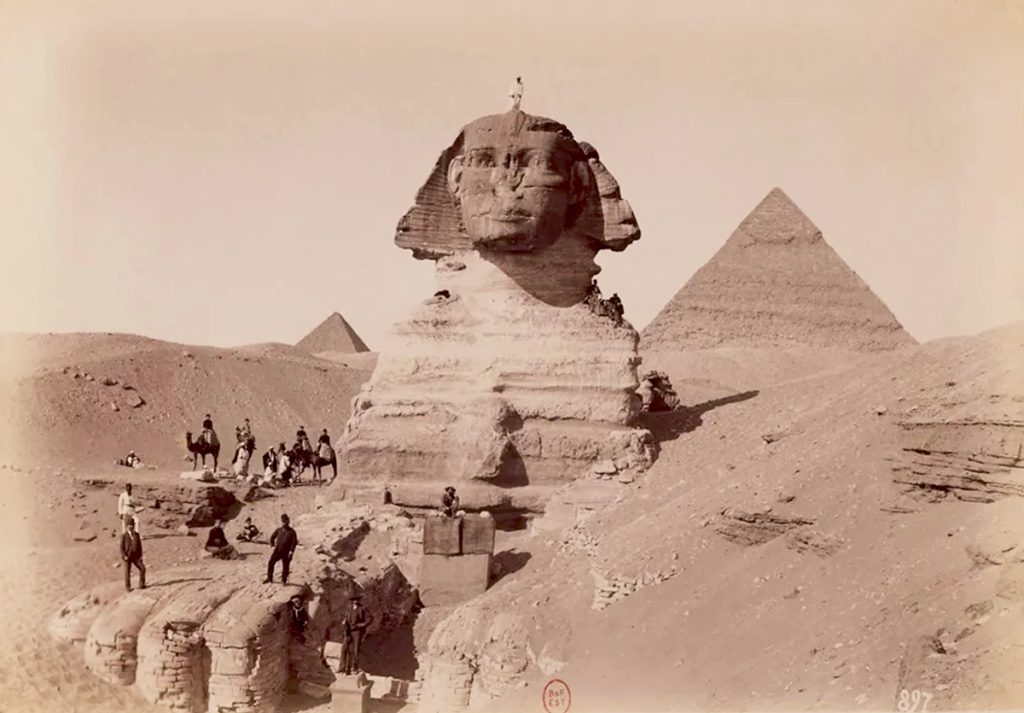
Most scholars believe the Sphinx was built during the reign of Khafre, though debates about its true age and purpose continue. The statue’s weathered features reflect centuries of sand, wind, and human intervention, with the mystery of its missing nose fueling countless legends. Some say it was destroyed by invaders; others claim natural erosion.
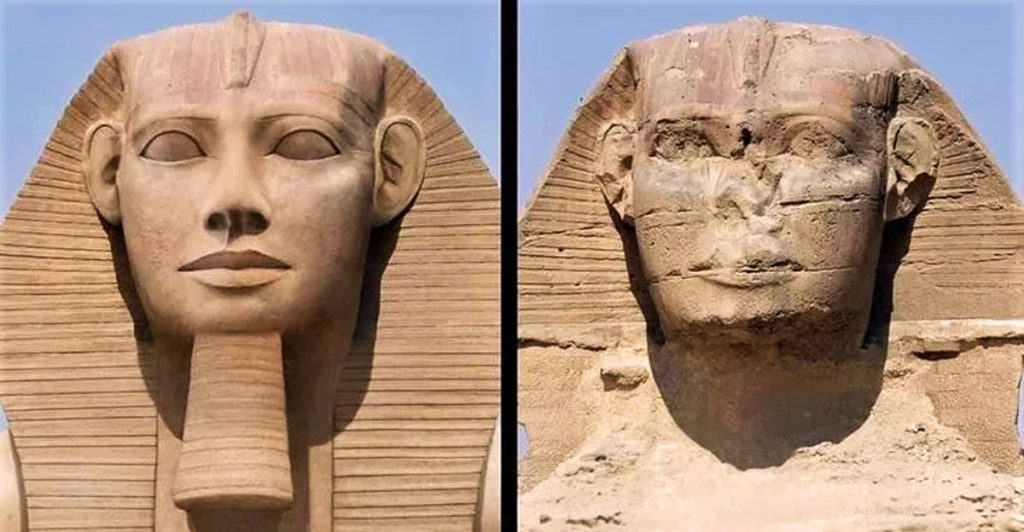
To stand before the Sphinx is to face a riddle in stone. Its silence compels both awe and curiosity, leaving visitors with more questions than answers. It embodies the enigma of Egypt itself—part history, part myth, and entirely timeless.

As the sun sets and the pyramids cast long shadows, the Sphinx transforms. No longer just a monument, it becomes a storyteller, its presence reminding all who look upon it that Egypt’s mysteries were never meant to be fully solved.
Hidden Gems

Even at one of the world’s busiest tourist sites, there are quiet discoveries that make a visit more intimate. These moments offer a glimpse beyond the crowds. Finding these spaces gives you a sense of discovery that makes Giza feel personal.

- The Pyramid of Menkaure often receives fewer visitors, allowing peaceful exploration. Menkaure’s pyramid feels more approachable, and that intimacy is part of its charm. Walking among its ruins, especially by the queens’ pyramids, allows a quieter, more personal connection to Giza’s royal legacy.
- The Tomb of Meresankh III: Though less visited than the great pyramids, the Tomb of Meresankh III offers an intimate, humanizing look at Giza’s royal women and the world that surrounded them. The tomb is cut directly into the limestone rock and contains some of the finest painted reliefs at Giza. For many, it is one of the most rewarding discoveries on the plateau, combining art, history, and family legacy.
- Sunrise and sunset transform the plateau into a mystical landscape, bathing the pyramids in shifting hues of gold and red. If you manage to explore Giza during these times, you will be rewarded with a sight not only breathtaking but also magical.
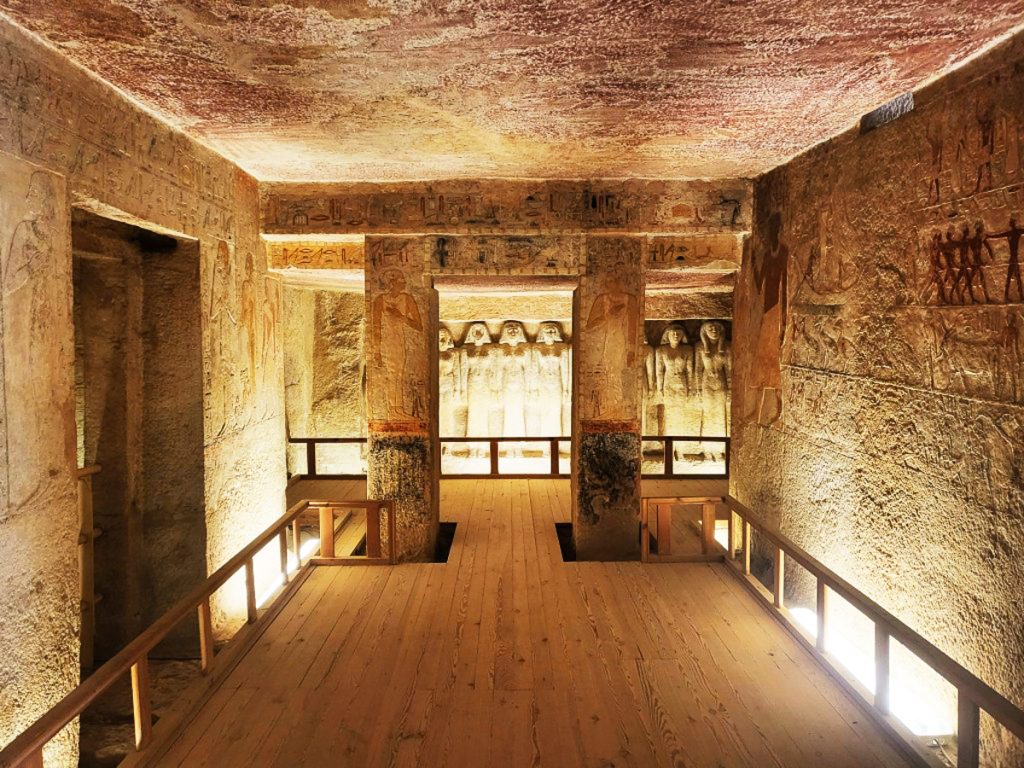
Nature & Desert Views
The plateau marks the threshold between Cairo and the vast Sahara, creating a striking contrast between city and wilderness. The desert gives the pyramids their most dramatic stage, a canvas of sand and sky that changes with the light.
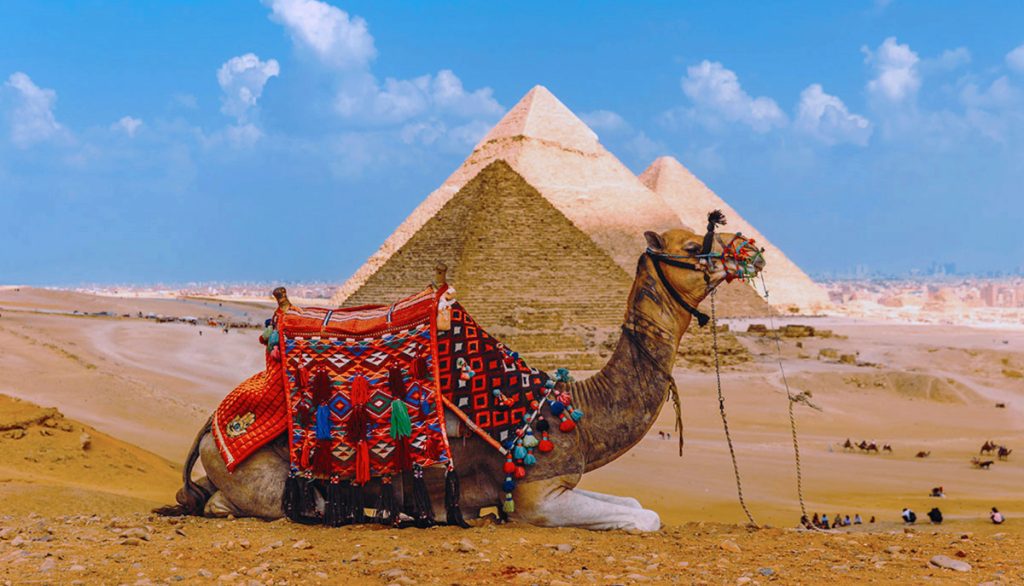
- Camel rides and horseback treks across the desert provide views of the pyramids once reserved for ancient processions.
- The sunset sky paints the monuments in breathtaking silhouettes of orange and purple.
- From the edges of the plateau, the Sahara stretches endlessly, a reminder of both nature’s power and timelessness.
Food & Dining
Egyptian cuisine adds warmth and flavor to the journey, with dishes that reflect centuries of tradition. Each meal here feels like a continuation of the cultural story told by the pyramids themselves.
Luxury
- 139 Pavilion at Marriott Mena House – Elegant dining with both Egyptian and international dishes, offering some of the very best pyramid views from its terrace.
- 9 Pyramids Lounge – A luxury open-air restaurant right on the Giza Plateau, where you can dine on mezze, grilled meats, and Egyptian classics while gazing at the monuments.
- Le Meridien Pyramids Hotel Restaurants – Multiple fine-dining options including Mediterranean and Middle Eastern cuisine, with stunning poolside pyramid views.
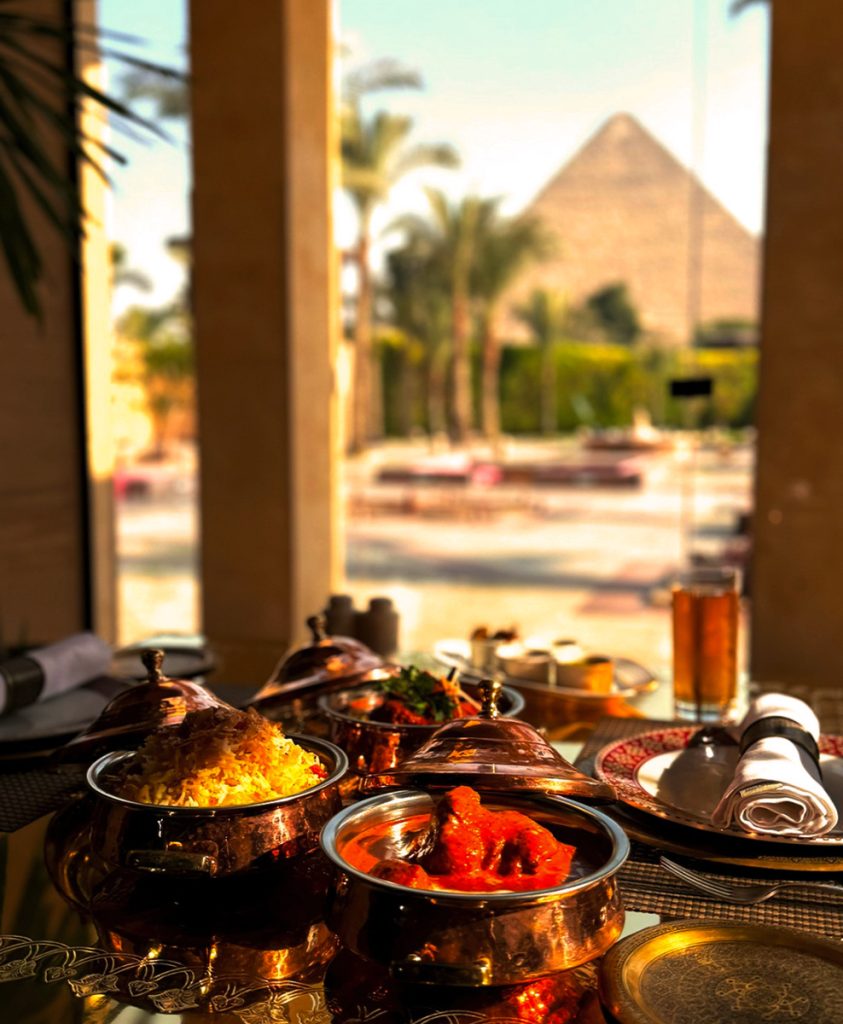
Mid-Range
- Felfela Village (Giza branch) – A rustic Egyptian restaurant serving koshari, stuffed pigeon, falafel, and grilled meats in a cozy, traditional setting.
- El Dar Darak – Popular with travellers for its friendly service and home-style Egyptian dishes like kebabs, molokhia, and stuffed vine leaves.
- Koshary Hekaya – A clean, modern spot near the pyramids serving hearty bowls of Egypt’s national dish at very fair prices.

Budget
- Abou Shakra (Pyramids Road, Giza) – A long-standing Egyptian chain serving reliable classics like grilled kofta, kebabs, and shawarma, right near the pyramid entrance.
- El Hadaba – A casual Egyptian eatery close to the plateau, known for hearty local staples and generous portions without breaking the bank.
- Pizza Hut Giza (with pyramid view terrace) – Surprisingly iconic, not for the food but for the unbeatable direct view of the pyramids while dining on a budget.
Where to Stay
Accommodations near Giza allow travelers to wake up with views of the pyramids, making the experience unforgettable. The right stay can make the journey feel just as magical at dawn as it is during the day.

- Luxury: Marriott Mena House – A historic palace hotel set in lush gardens with breathtaking views of the pyramids. It has hosted sultans, royals, and statesmen during more than a century as one of the world’s grand hotels.
- Mid-Range: Pyramids Valley Boutique Hotel – A cozy stay with rooftop dining and intimate pyramid views.
- Budget: Panorama Pyramids Inn – Affordable comfort with unmatched sunrise panoramas.
Day Trips

From Giza, travelers can easily reach other remarkable sites that complete Egypt’s story. If you are able to, try these excursions to broaden the experience, offering new perspectives on Egypt’s legacy.
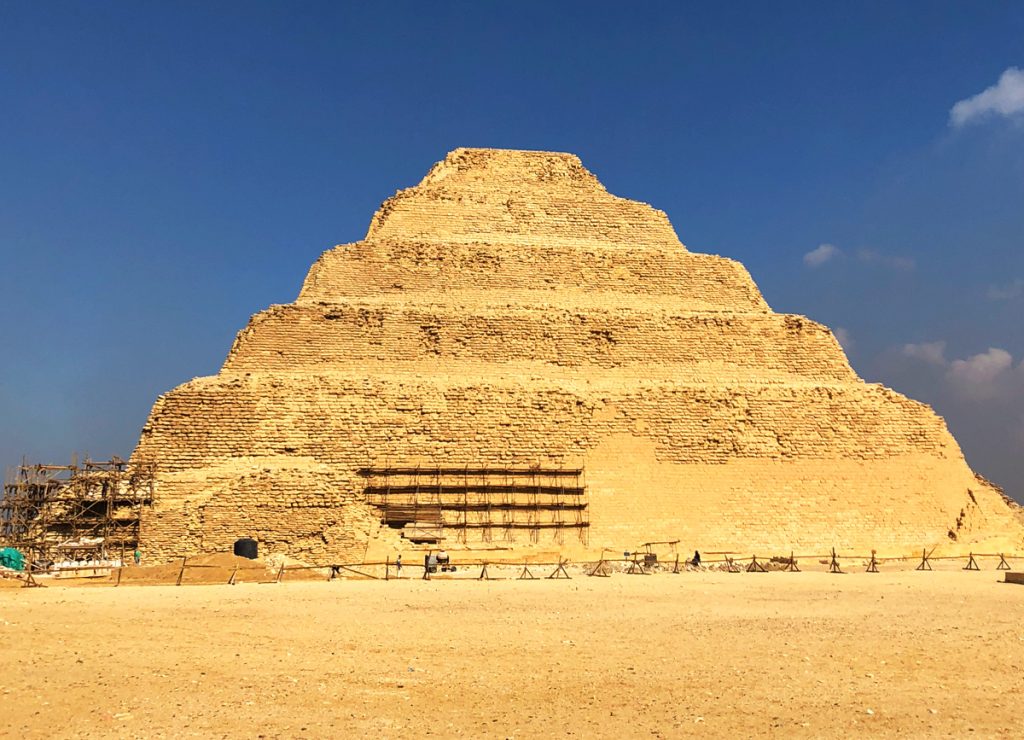
- Saqqara: with the Step Pyramid of Djoser, marks the dawn of pyramid architecture. The vast necropolis also contains mastaba tombs with brilliantly painted reliefs, making it one of the richest archaeological sites in Egypt.
- Memphis: the ancient capital of Egypt, still houses colossal statues and relics of power. Its open-air museum features the impressive fallen colossus of Ramses II, offering a tangible connection to Egypt’s earliest rulers.
- A Nile dinner cruise in Giza: offers a relaxed way to end a day at the pyramids, with boats departing from nearby docks along the river. These cruises often include buffet dinners or à la carte menus, traditional music, and folk performances, all while gliding past the lights of the Giza waterfront. They provide the same mix of dining and entertainment as Cairo’s larger vessels but with the added convenience of staying close to the plateau.
Final Thoughts
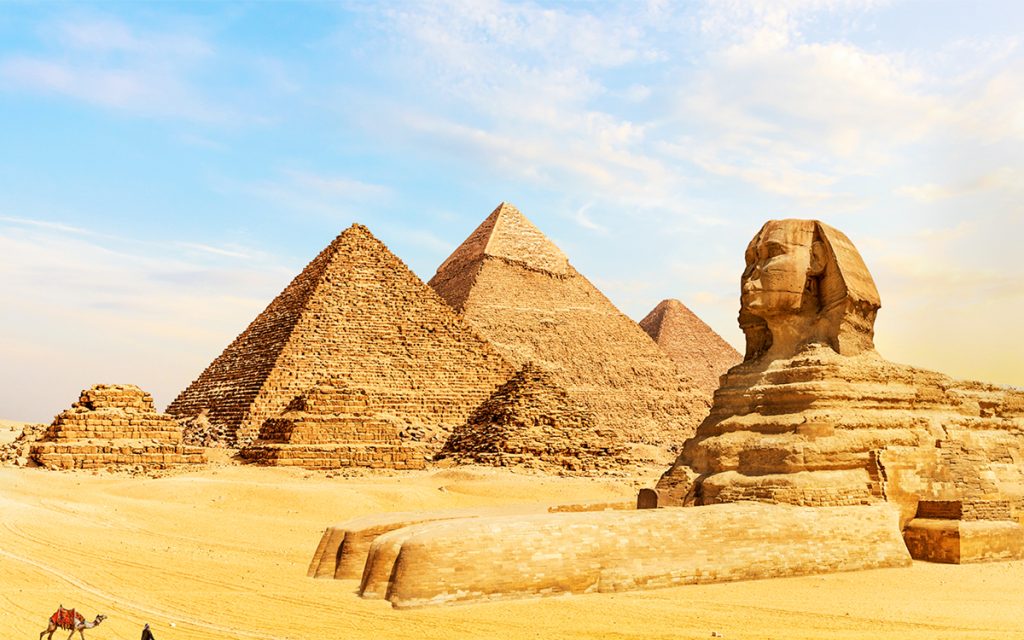
The Pyramids of Giza are not relics of a vanished world—they are living symbols of human ambition and endurance. To explore their sands is to encounter the brilliance of the pharaohs, the devotion of builders, and the soul of ancient Egypt itself. Whether tracing hidden tombs, riding through the desert, drifting along the Nile, or meeting the gaze of the Sphinx, every moment at Giza feels eternal. This is more than a destination; it is history carved into stone, forever echoing across the sands of time.







